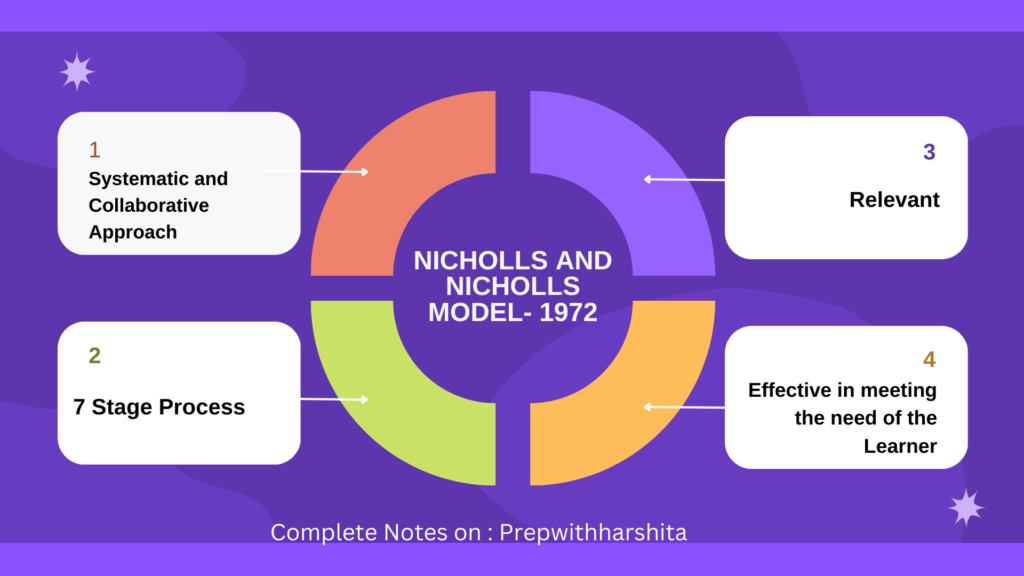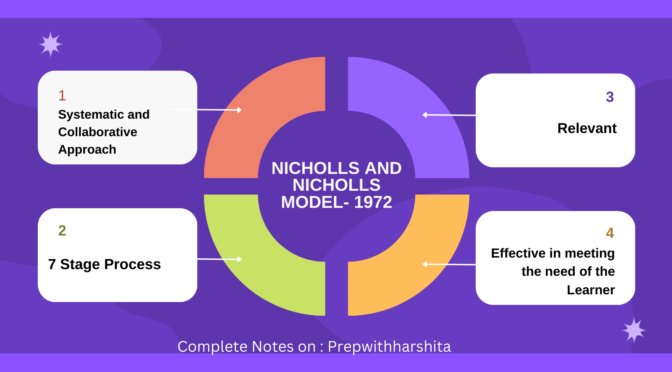The Nicholls and Nicholls Model of Curriculum Development 1972 model emphasizes the importance of a systematic and collaborative approach to curriculum development. It highlights the need to identify the needs and goals of the learners and the community, select appropriate content and teaching methods, and continuously evaluate and revise the curriculum to ensure it remains effective and relevant.
This Model of Curriculum Development is a systematic approach to curriculum development that was developed by John Nicholls and Sheelah Nicholls. The model outlines a seven-stage process for developing a curriculum that is relevant and effective in meeting the needs of the learners and the community.
Also Visit: Prep with Harshita
The Model is a 7-stage model that outlines a systematic approach to curriculum development. The seven stages are:
- Focus on the educational problem: The first stage involves identifying and defining the educational problem or need. This stage involves conducting a thorough analysis of the situation and identifying the needs of the learners and the community.
- Formulation of the curriculum objectives: The second stage involves formulating the curriculum objectives that are based on the identified needs and goals. These objectives should be specific, measurable, achievable, relevant, and time-bound.
- Selection of the content: The third stage involves selecting the appropriate content that aligns with the curriculum objectives. This content should be relevant, current, and applicable to the learners’ needs.
- Organization of the content: The fourth stage involves organizing the selected content into a coherent and logical sequence. This stage involves developing a structure for the curriculum that is easy to follow and understand.
- Selection of teaching methods: The fifth stage involves selecting the appropriate teaching methods. The strategies should align with the curriculum objectives and content. These methods should be engaging, interactive, and effective in achieving the desired learning outcomes.
- Evaluation of the curriculum: The sixth stage involves evaluating the effectiveness of the curriculum in achieving the desired learning outcomes. This stage involves collecting and analyzing data to determine whether the curriculum objectives have been met.
- Revision of the curriculum: The final stage involves revising the curriculum based on the evaluation results. This stage involves making necessary adjustments and improvements to ensure the curriculum remains relevant and effective.


